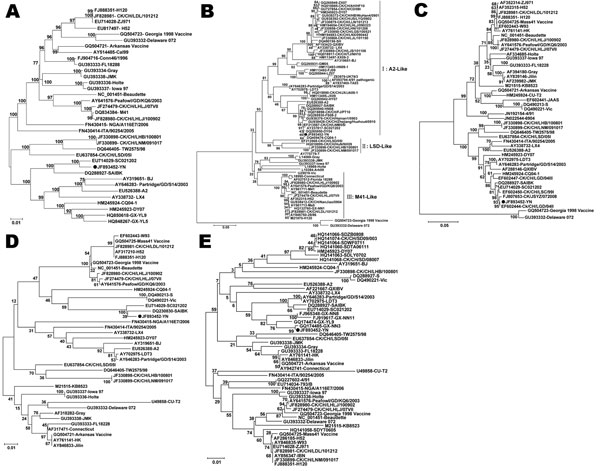Volume 18, Number 12—December 2012
Research
Virulent Avian Infectious Bronchitis Virus, People’s Republic of China
Figure 1

Figure 1. . Phylogenetic tree of avian infectious bronchitis virus based on the nucleotide sequences of the complete genome (A), S1 gene (B), S2 gene (C), E gene (D), M gene (E), and N gene (F). The phylogenetic tree was constructed by the neighbor-joining method with 1,000 bootstrap replicates (bootstrap values are shown on the tree). The isolate sequenced in this study is indicated with a black dot.
Page created: November 21, 2012
Page updated: November 21, 2012
Page reviewed: November 21, 2012
The conclusions, findings, and opinions expressed by authors contributing to this journal do not necessarily reflect the official position of the U.S. Department of Health and Human Services, the Public Health Service, the Centers for Disease Control and Prevention, or the authors' affiliated institutions. Use of trade names is for identification only and does not imply endorsement by any of the groups named above.